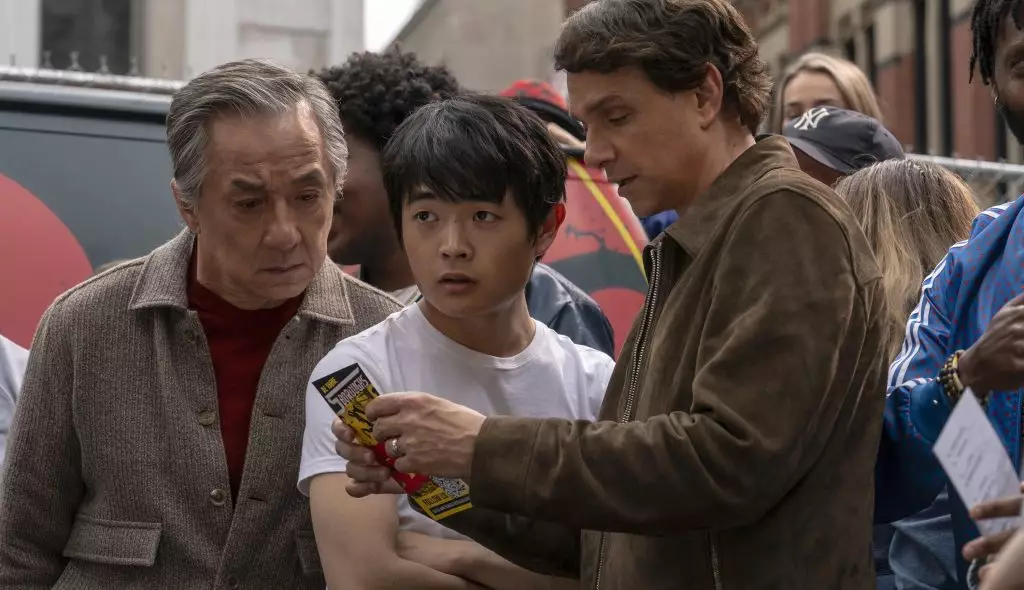With movie theaters buzzing this summer, one factor stands out starkly: the overwhelming dominance of established franchises. Memorial Day weekend staggered into the record books, with impressive earnings driven largely by films that are sequels, reboots, or extensions of already successful franchises. This trend isn’t simply a summer phenomenon; it represents a broader shift in the cinematic landscape. Hollywood seems particularly obsessed with leaning on nostalgic elements, believing that franchise familiarity ensures box office success. But the question looms—are we sacrificing groundbreaking original films for the comfort of known entities? As franchises like “The Karate Kid” and revivals of classics like “Lilo & Stitch” reign supreme, the theatrical space has become less an arena for fresh ideas and more a sea of sameness, littered with echoes of the past.
Education and Entertainment: The Impact of School Holidays
Compounding this issue is the stark reality of the summer box office curating its offerings around the school calendar. With 45% of K-12 schools closing their doors for the summer, Hollywood gears up to cater specifically to kids and families. While this strategic release timing is understandable, it again highlights the tendency to gravitate toward family-friendly sequels and animated features rather than risking investment in innovative storytelling. Why risk losing ticket sales to a daring new screenplay when you can just reboot a well-trodden classic? The commercial safety net provided by school breaks leads studios to prioritize easily digestible content over artistic challenges or original narratives.
The Battle of the Blockbusters: An Uneven Playground
In this festival of blockbuster expectations, competition becomes fierce. For instance, Sony’s “Karate Kid: Legends,” despite being produced on a modest budget of $45 million, is aimed squarely at recapturing the audience’s fondness for the franchise, even if it pales in comparison to the original films. The projections anticipate a solid opening weekend, with box office estimates in the $25 million-$30 million range, which, while commendable, reveals a near-certain defeat against Disney’s nostalgic juggernaut, “Lilo & Stitch.” This disproportionate appeal for family-oriented reboots only serves to further starve the marketplace of risk-taking cinematic endeavors, leaving only a few daring narratives struggling to stand out.
The Raging Controversy of Review Culture
As the summer unfolds, another layer adds complexity: the influence of review embargoes on movie expectations. The anticipation surrounding films like “Bring Her Back” hinges not only on the stories they tell but also on the buzz generated before public viewing. The suspense of waiting for review scores builds heightened expectations, distorting how audiences perceive films even before they’re released. While positive reviews could bolster a fledgling film’s standing, the mantra that “any publicity is good publicity” doesn’t hold as true in today’s climate, where Rotten Tomatoes scores shape pre-release market behavior. This environment cultivates an unnerving pressure on filmmakers to conform to audience and critic expectations, further dampering original artistic expression.
Innovative Risk vs. Franchise Reliance
Despite succumbing to the siren song of sequels and remakes, we are witnessing a handful of brave filmmakers breaking through the cracks. For instance, A24’s “Talk to Me,” with its twisted narrative and unique approach to horror, shines as a beacon of hope amidst the expected offerings of the summer lineup. However, success stories like this are overshadowed by the general audiences’ interest in legacy properties. The danger lies in a subtle acceptance of mediocrity; when studios ignore original storytelling in favor of franchise familiarity, they risk octopus-like tentacles suffocating creativity itself rather than nurturing growth.
As audiences flock to the theaters this summer, we must be vigilant. The overwhelming embrace of legacy franchises raises significant concerns about the future of original storytelling in Hollywood. Will we eventually be left with a film landscape parched of novelty? Only time will tell, but it’s a narrative worth challenging before the teasers for next year’s sequels drown out the voices of innovation altogether.

